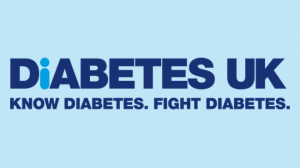
Diabetes is a chronic condition where the body is unable to regulate its glucose levels as a result of either the pancreas failing to produce insulin, or insufficient insulin to help glucose enter the body’s cells. Alternatively, the insulin that is produced does not work properly (known as insulin resistance (IR)). These are the two main types of diabetes:
Genetics certainly increase the chances of getting both types of diabetes, but it is accepted that certain factors, particularly overeating and a sedentary lifestyle increase the risk of type 2 diabetes. Other factors include age, being overweight or obese, body fat distribution, family history and ethnicity.
Diabetes can lead to heart disease, stroke, kidney disease, vision problems and lower limb amputation if it is not properly controlled.
While it is a serious condition, diabetes is a very common lifelong health condition that does not hinder people’s ability to get a job or to keep one. The law requires that people with diabetes be assessed on their individual ability to do a job and not to be discriminated against simply because they have the condition.
However, some safety critical jobs will have legitimate health requirements that may exclude people with certain medical conditions. There are some key areas of employment, such as driving long goods vehicles or those carrying passengers, where there are restrictions on people with insulin-dependent diabetes.
Concerns about workplace safety in relation to diabetes tend to be associated with the development of hypoglycaemia — a state of low blood glucose. Symptoms of hypoglycaemia can include hunger and dizziness as well as confusion and unconsciousness. Hypoglycaemia is commonly perceived as a concern for people with type 1, rather than type 2 diabetes, although hypoglycaemia is a potential risk for anyone using insulin and many people with type 2 diabetes are insulin-dependent.
In contrast, hyperglycaemia occurs when blood glucose is high because the body has too little insulin or is improperly using insulin, resulting in symptoms such as hunger, thirst and frequent urination. Left untreated, hyperglycaemia can lead to diabetic coma. However, the symptoms of hyperglycaemia generally develop over hours or days and do not occur suddenly. Therefore, hyperglycaemia does not pose an immediate risk of sudden incapacitation.
It is estimated that around half a million people in the UK have diabetes but are unaware that they have it. Given that many of us may also be at risk of developing type 2 diabetes in the future, Diabetes UK says that holding a diabetes awareness day could make a big difference to the health and wellbeing of staff (see Diabetes UK website for information in this regard).
Employers could of course also use their existing wellbeing programmes to raise awareness about the condition, including information about the value of keeping active, eating healthily and maintaining a healthy weight.
Type 2 diabetes isn’t inevitable. Up to 80% of cases of type 2 diabetes can be delayed or prevented, so it’s important that everyone understands their risk, so they can reduce their chances of ever developing the condition.
Contact us for further information.